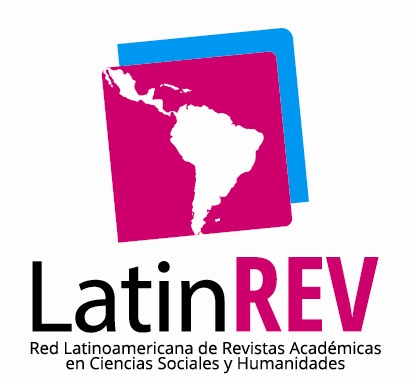The influence of the Intuitive-Imitative approach on pronunciation instruction in English as a Foreign Language (EFL): Analyzing its effectiveness and pedagogical implications for enhancing pronunciation skills among EFL learners
Resumen
This study analyzed the influence of the Intuitive-Imitative Approach on pronunciation instruction among English as a Foreign Language (EFL) students. The research was conducted using a mixed-methods approach, with a non-experimental descriptive design. A survey consisting of 20 Likert-scale items and three open-ended questions was administered to 83 university students. The validity of the instrument was confirmed through Cronbach's alpha coefficient (0.770) and expert review. The findings indicated that the Intuitive-Imitative Approach is widely applied in EFL classrooms. It was found that students predominantly use strategies based on imitation and repetition to improve their pronunciation, highlighting the importance of auditory exposure and repetitive practice. Additionally, the results revealed that instructors combine analytic-linguistic and intuitive-imitative approaches, prioritizing the use of audiovisual resources and interactive activities. It is concluded that pronunciation teaching through the Intuitive-Imitative Approach facilitates the natural acquisition of sounds and rhythms of the language, allowing students to develop a more authentic and intelligible pronunciation in English.
Descargas
Citas
Alghazo, S. (2021). Phonological challenges in EFL pronunciation: An analysis of the differences between Spanish and English. Journal of Language Teaching and Research, 12(4), 520-530. https://doi.org/10.17507/jltr.1204.03
Behzadi, A., & Fahimniya, F. (2014). The effect of using two approaches of teaching pronunciation (intuitive-imitative and analytic-linguistic) on speaking fluency among Iranian EFL learners. Indian Journal of Fundamental and Applied Life Sciences, 4(1), 27-39. https://shorturl.at/Jow5q
Best, C. T. (1995). A direct realist view of cross-language speech perception. In W. Strange (Ed.), Speech perception and linguistic experience: Issues in cross-language research (pp. 171-204). Timonium, MD: York Press.
Celce-Murcia, M., Brinton, D. M., & Goodwin, J. M. (2010). Teaching pronunciation: A course book and reference guide (2nd ed.). Cambridge University Press.
Derwing, T. M., & Munro, M. J. (2015). Pronunciation fundamentals: Evidence-based perspectives for L2 teaching and research. John Benjamins Publishing Company. https://doi.org/10.1075/ill.18
Flege, J. E. (1995). Second language speech learning: Theory, findings, and problems. In W. Strange (Ed.), Speech perception and linguistic experience: Issues in cross-language research (pp. 233-277). Timonium, MD: York Press.
Manrique-Cáceres, J., Rurush Asencio, R., & Castillo Picón, J. (2024). Exportaciones, Inversión y Empleo y su Relación con el Crecimiento Económico del Perú, 1980 – 2021. Estudios Y Perspectivas Revista Científica Y Académica , 4(1), 2530–2546. https://doi.org/10.61384/r.c.a.v4i1.212
Franco Gallegos , L. I., Aguirre Chávez , J. F., Robles Hernández, G. S. I., Montes Mata, K. J., & Ponce de León, A. C. (2024). Efectos diferenciales del ejercicio aeróbico y el entrenamiento de fuerza en marcadores biológicos de salud en adultos mayores. Revista Científica De Salud Y Desarrollo Humano, 5(2), 249–273. https://doi.org/10.61368/r.s.d.h.v5i2.135
Fernández, A. (2023). The Social Impact of Independent Audiovisual Production in the Age of social media: A Case Study in Zamora, Ecuador. Revista Veritas De Difusão Científica, 4(1), 161–180. https://doi.org/10.61616/rvdc.v4i1.42
Fernández C., F. (2024). Determinación De Erodabilidad En Áreas De Influencia Cuenca Poopo Región Andina De Bolivia. Horizonte Académico, 4(4), 63–78. Recuperado a partir de https://horizonteacademico.org/index.php/horizonte/article/view/19
Medina Nolasco, E. K., Mendoza Buleje, E. R., Vilca Apaza, G. R., Mamani Fernández, N. N., & Alfaro Campos, K. (2024). Tamizaje de cáncer de cuello uterino en mujeres de una región Andina del Perú. Arandu UTIC, 11(1), 50–63. https://doi.org/10.69639/arandu.v11i1.177
Da Silva Santos , F., & López Vargas , R. (2020). Efecto del Estrés en la Función Inmune en Pacientes con Enfermedades Autoinmunes: una Revisión de Estudios Latinoamericanos. Revista Científica De Salud Y Desarrollo Humano, 1(1), 46–59. https://doi.org/10.61368/r.s.d.h.v1i1.9
Gilbert, J. B. (2008). Clear speech: Pronunciation and listening comprehension in North American English (4th ed.). Cambridge University Press.
Jafari, S. M., Ahmadi, M., & Riasati, M. J. (2021). Pronunciation teaching and teacher training: A survey of attitudes and practices. Journal of English Linguistics, 49(3), 222-245. https://doi.org/10.1177/0075424220982505
Jenkins, J. (2000). The phonology of English as an international language. Oxford University Press.
Littlewood, W. (2004). The task-based approach: Some questions and suggestions. ELT Journal, 58(4), 319-326. https://doi.org/10.1093/elt/58.4.319
Littlewood, W. (2004). The task-based language teaching. Cambridge University Press.
Lyster, R. (2004). Understanding second language acquisition. Oxford University Press.
Roohani, A. (2013). A comparative study of intuitive-imitative and analytic-linguistic approaches to teaching pronunciation: does age play a role. The Asian EFL Journal Quarterly, 15(1), 87-127. https://shorturl.at/iJn3E
Roohani, A. (2013). The effectiveness of the analytic-linguistic approach in teaching pronunciation to Iranian EFL learners. International Journal of Applied Linguistics & English Literature, 2(6), 160-169. https://doi.org/10.7575/ijalel.v.2n.6p.160
Derechos de autor 2025 Pamela Elizabeth Casa Molina, Bryan Alexander Gordón Fiallos, Nayeli Nicole Nuñez Melo , Mirian Paulina Aguaguiña Pilla

Esta obra está bajo licencia internacional Creative Commons Reconocimiento 4.0.













.png)




















.png)
1.png)


